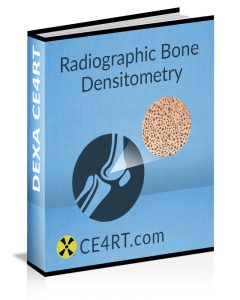Osteoporosis Treatment Guidelines in Adults

In young and middle-aged adults, the mainstay of bone health is maximizing nutrition and encouraging healthy lifestyle behaviors such as regular physical activity. Based on osteoporosis treatment guidelines, younger adults who remain osteoporotic despite non-pharmacologic measures are possible candidates for therapy with antiresorptive agents.
It is the responsibility of a patient’s healthcare providers to ensure comorbid conditions are adequately treated and monitored. For instance, in patients with hypothyroidism on treatment with L-thyroxine, it is necessary to monitor TSH levels and ensure they are in the normal range. Other than glucocorticoids, which are well known to induce rapid bone loss, very few medications have been studied in detail with regards to osteoporosis. However, healthcare professionals must remain vigilant in patients with underlying health conditions that are associated with a reduction in bone mass (for example, hypogonadism).
Frequency of BMD Testing
Healthcare providers are also responsible for planning the frequency of bone density testing in adults. Women who have undergone BMD measurement before menopause should only be subjected to additional testing if the results will lead to possible alteration in therapy. Osteoporosis treatment guidelines dictate that women in early menopause with a bone density that is either normal or only slightly low do not usually require repeat testing for another 3 to 5 years provided other medical conditions do not develop that could lead to bone loss. However, individuals receiving antiresorptive agents may require more frequent monitoring with periodic follow up DXA scans.
Variability in BMD Results
Healthcare professionals should make note that even with careful technique and rigorous quality control, there can be considerable variability in densitometry measurements. This influences the osteoporosis treatment guidelines for a patient. It takes a minimum of 18-24 months for any large changes in bone density to become evident. For this reason, DXA scans should be spaced apart by about two years. Treatment regimens should not be altered in response to minor differences in BMD.
It is also noteworthy that during clinical research and trials, an increase or decrease in BMD by as little as 4 percent is sometimes considered significant. However, in the clinical setting, based on the accuracy of densitometry in medical offices, an increase or decrease in hip or spine bone density of less than 5 percent must be interpreted with great caution.
Compliance with Osteoporosis Treatment
Monitoring by a healthcare provider has been shown to improve compliance with osteoporosis therapy. It should be noted that osteoporotic patients are especially prone to poor adherence to prescription therapy (not taking the drug properly). Poor persistence with treatment (not taking the drug over time) is also common. This is because they do not observe any specific signs that the therapy is working. Osteoporosis treatment guidelines must take this into consideration.
Monitoring by a nurse or other health provider can address this issue. A study found that monitoring, both with and without biochemical markers of bone turnover, improves both adherence and persistence, which in turn are associated with improved outcomes.
Referral to Specialists for Young and Middle-Aged Adults
Young and middle-aged adults with challenging clinical problems related to bone health should be considered for specialty referrals. The additional expertise of specialists can help fine-tune osteoporosis treatment guidelines. Primary care providers can identify the cause of suboptimal bone mass and assess for secondary causes of osteoporosis. However, a second opinion may be useful prior to beginning a patient on prolonged antiresorptive therapy.
Specialist consultation may also be necessary in patients who are intolerant or unresponsive to therapy. Referrals to rheumatologists, endocrinologists, and other specialists are sometimes required for updated osteoporosis treatment guidelines. Nutrition consultants and physical therapists can help plan and implement diet and physical activity regimens for patients, especially those with significant mobility limitations or dietary restrictions.
Osteoporosis Treatment Guidelines for High-Risk Patients
When planning treatment for osteoporosis, healthcare providers should be aware that high- and low-risk patients are not clearly defined. Certain factors that are known contributors to bone loss should serve as red flags. These include low body weight as well as nutritional, musculoskeletal, and endocrine disorders. A family history of osteoporosis is also a red flag. In addition to factors that influence bone fragility, risk analysis should include factors that contribute to a person’s risk of falling. All these influence osteoporosis treatment guidelines.

It is also important to note that if hip and spine BMD measurements are not available, peripheral T-scores may be used to assess an individual’s risk of osteoporosis. However, the threshold T-score values for diagnosis and treatment of osteoporosis based on peripheral measurements have not been established.
Secondary Causes of Bone Loss
Healthcare professionals must evaluate patients for secondary causes of bone loss before initiating pharmacotherapy based on osteoporosis treatment guidelines. Osteopenic individuals (with bone density between -1.0 and -2.5) are at increased risk of fractures. Whether treatment should be initiated in these individuals or not depends on many factors. For example, if the individual is a young adult with low BMD and no prior fragility fractures, conservative therapy with calcium, vitamin D, and physical activity may be appropriate. However, an osteopenic adult with a prior history of fragility fracture may be more appropriately treated with an antiresorptive agent.
Continuing Education for X-ray Technologists
We have a range of online courses that are good for DXA operators and X-ray techs. You can earn 23 ARRT®CE credits with our bone densitometry course. Our e-courses offer an easy, cost-effective, and convenient way to complete your X-ray continuing education requirements. Please visit our shop to complete your purchase today.
Get more information about free arrt® ce credits online here.
